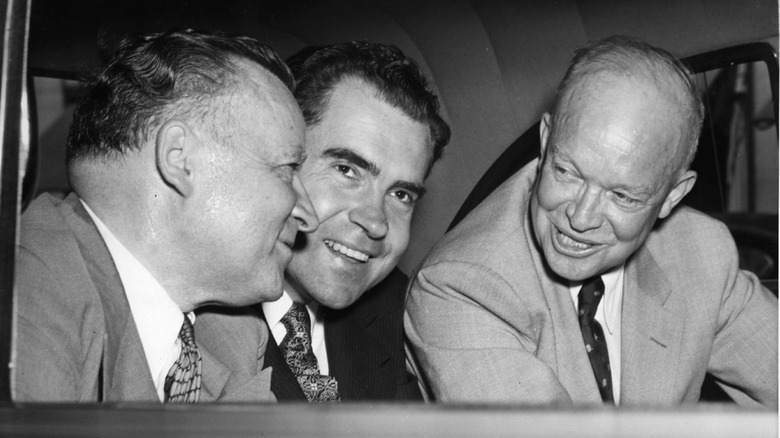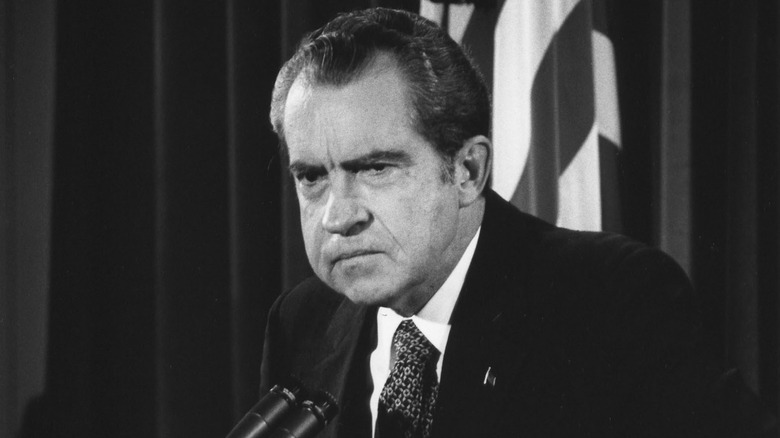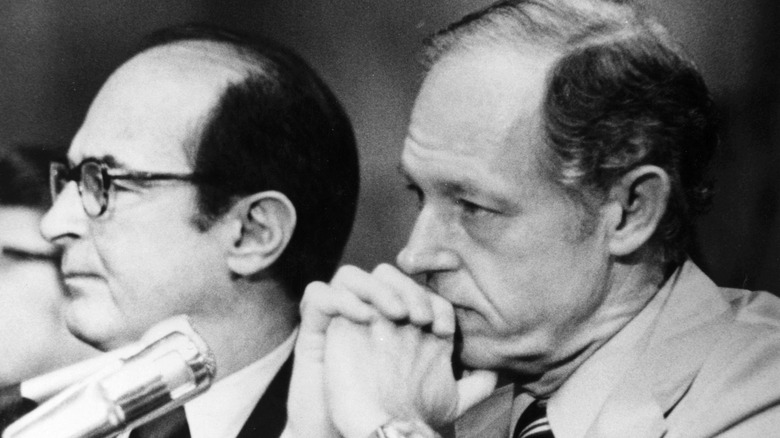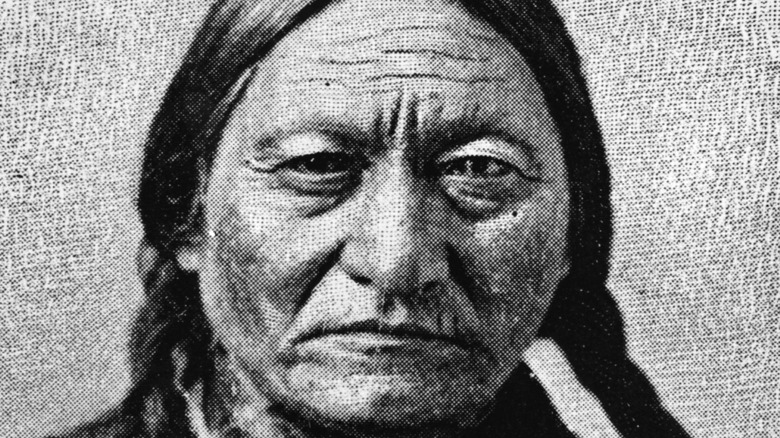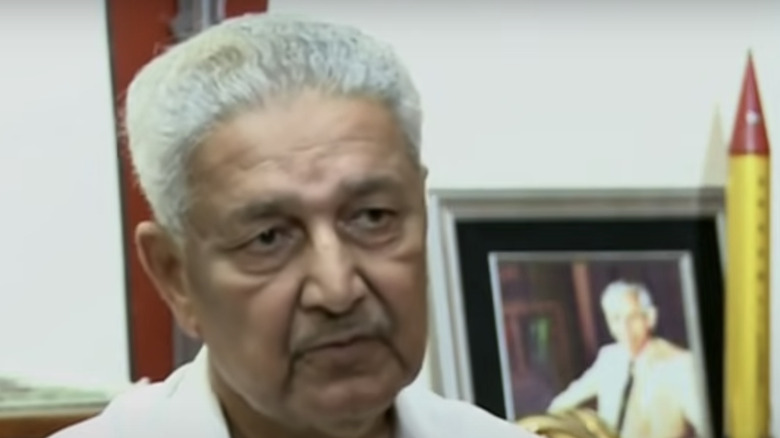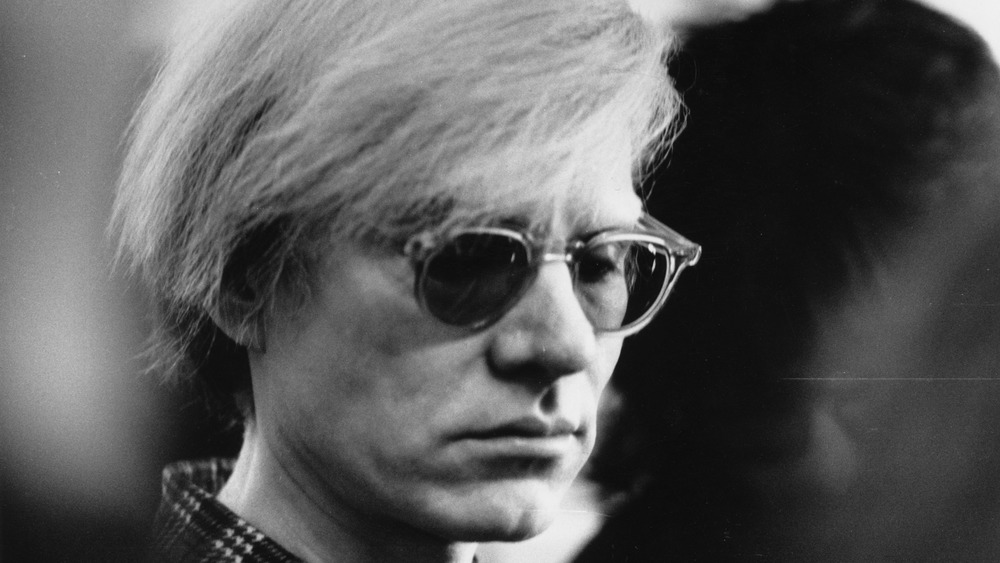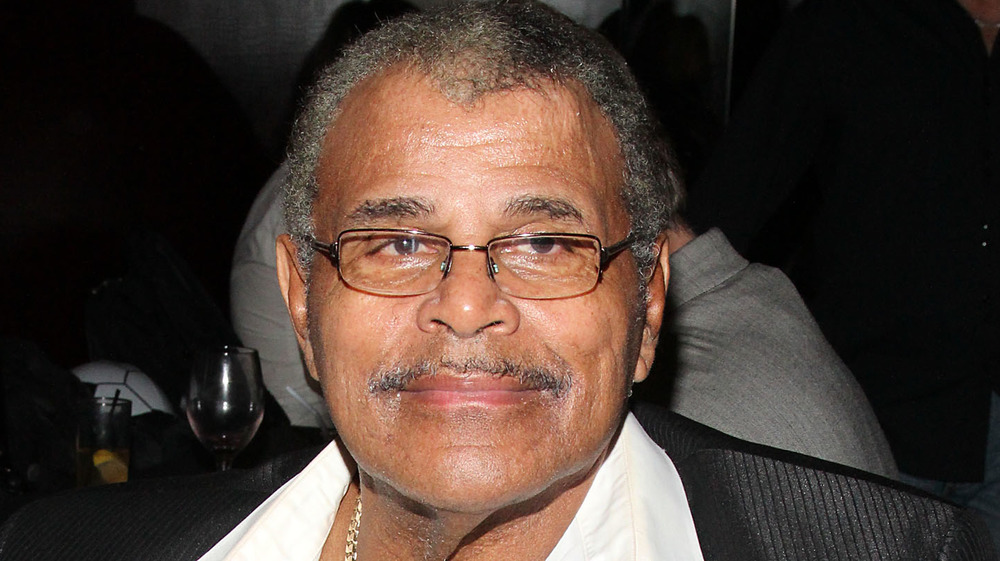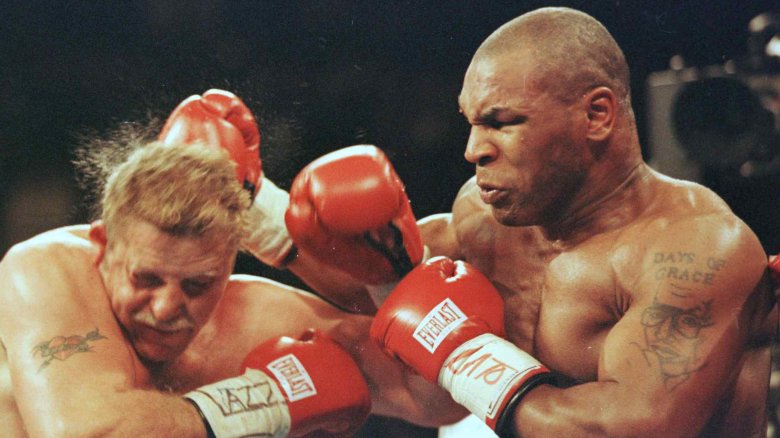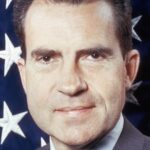
Nixon’s Alleged Plot To Assassinate A Journalist Explained
Richard Nixon is not a president that is necessarily remembered for his ethical behavior. After getting caught attempting to cover up his administration’s involvement in a break-in of the Democratic National Committee headquarters at the Watergate Office Building in Washington, D.C., and the subsequent revelation of taped recordings that revealed several abuses of power, Nixon resigned from office on August 8, 1974, according to History.
The notorious Watergate break-in has since become so synonymous with political wrongdoing that it is common practice to add the suffix “gate” to just about any activity with a hint of scandal. So it might come as a bit of a surprise that the Watergate scandal might not have even been the most unscrupulous plot that Nixon had been involved in during his presidency. As the investigative journalist and correspondent Mark Feldstein has documented in his book “Poisoning the Press: Richard Nixon, Jack Anderson and the Rise of Washington’s Scandal Culture,” Nixon and his political operatives were purportedly once involved in a plot to assassinate investigative journalist Jack Anderson, per NPR.
Anderson had been reporting on Nixon since the start
Jack Anderson worked as a nationally syndicated newspaper columnist, writing the “Washington Merry Go-Round,” one of the most popular newspaper columns in the country. It was published in almost a thousand newspapers and read by 40 million people nationwide, according to The Washington Post. He was a dogged reporter, considered to be one of the fathers of modern investigative journalism. Anderson was known as a muckraker, one that wasn’t afraid to use tactics like bugging, eavesdropping, and even stealing documents to get stories.
While he wrote on topics including the Mafia, FBI director J. Edgar Hoover, and Senator Joseph McCarthy, Richard Nixon was perhaps Anderson’s favorite topic. Anderson began covering Nixon in the early 1950s, when he was still Dwight Eisenhower’s running mate. He spent much of his career covering Nixon’s political rise, reporting on his run for governor of California in 1962 and his presidential run in 1968 (via NPR). “Jack Anderson was like Ahab chasing after Richard Nixon, this great white whale, and he plagued Nixon from the very beginning of his career,” Feldstein described, via NBC News.
Publication of documents related to the Indo-Pakistani War infuriated Nixon
Jack Anderson’s most important Nixon coverage came in the 1970s, when Nixon was serving his first term as president. In 1971, Pakistan and India were embroiled in a conflict sparked by the Bangladesh Liberation War. The Nixon White House publicly maintained that they would remain neutral in the Indo-Pakistani War. However, Anderson proved that to be a lie when he managed to get classified documents that showed Nixon had been secretly providing arms to Pakistan. Anderson then published these documents for the public to read.
Unsurprisingly, the president and his administration was none too happy about this coverage. But Nixon’s obsession with Anderson had actually begun some 40 years earlier, when Anderson first exposed a secret slush fund of financial support for Nixon. “The president had always believed the press was out to get him, and in Anderson he found confirmation of his deepest anxieties,” Feldstein wrote (via NPR). But the publication of these classified documents was the last straw for Nixon, who was facing a reelection campaign. “The day after the election, win or lose, we’ve got to do something with this son of a b****,” Nixon allegedly told Attorney General John Mitchell on January 3, 1972, via NBC News.
An unsuccessful smear campaign against Anderson
At first, the Nixon administration planned to discredit Anderson with a smear campaign. They set to work spreading rumors that Anderson, as well as his former employer and fellow columnist Drew Pearson, were closeted homosexuals, which was a potentially career-ending accusation at that time. Nixon also concocted a plan to plant a falsified White House document with Anderson. Once Anderson published the fake document, they could then expose it as a forgery, thus discrediting Anderson as a journalist, according to NBC News.
However, when the campaign to destroy Anderson didn’t prove to be effective, Nixon and his operatives purportedly began plotting to kill Anderson in what Feldman described as a “Mafia-style hit to silence a journalistic critic,” via NPR. Anderson’s home was also placed under surveillance, and his movements were monitored by the White House. A senior White House aide named Charles Colson supposedly then directed G. Gordon Liddy and E. Howard Hunt, two of Nixon’s White House “plumbers,” to get rid of Anderson through more violent means.
An assassination plot involving poison and LSD
The “plumbers'” allegedly bandied about several ideas for the best methods to eliminate Anderson. They discussed poisoning him by hiding a special poison inside his medicine cabinet. Another idea was to plant extremely large doses of the hallucinogenic drug LSD on the steering wheel of Anderson’s car, thus causing him to experience hallucinations while driving and fatally crash his car. “The more that Colson knew about Anderson, the more resolved he was to put an end to it by whatever means. He regarded it as a protective function in terms of the president, get rid of this thorn in his side, one way or another, with hallucinogens or not,” Hunt explained to Feldstein shortly before his death in 2007 (via NBC News).
However, the alleged assassination plot failed before it ever really got started. The two conspirators, Liddy and Hunt, were arrested for their involvement in the Watergate affair after the scandal broke, and the obsession with Anderson was largely forgotten, according to The Washington Post. For his part, Anderson was awarded a Pulitzer Prize in 1972 for his investigative reporting into the secret policymaking during the Indo-Pakistani War of 1971. Anderson went on to live a long life, continuing to write his famous column until the age of 81, when he finally retired it from syndication. He passed away from complications from Parkinson’s disease in 2005 at the age of 83.
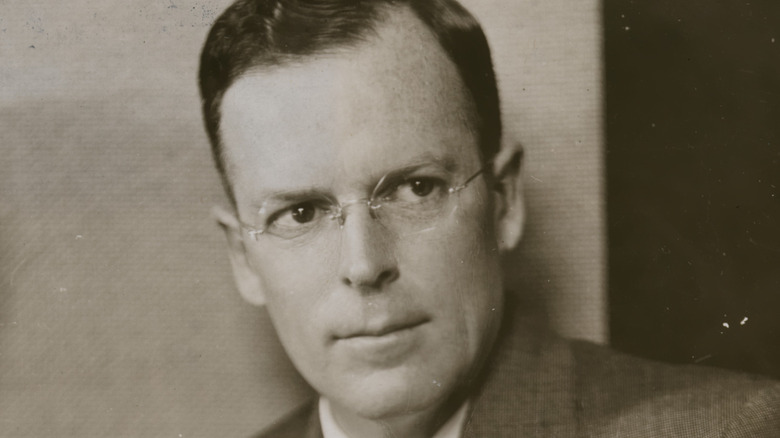
The Untold Truth Of Amelia Earhart's Husband George Putnam
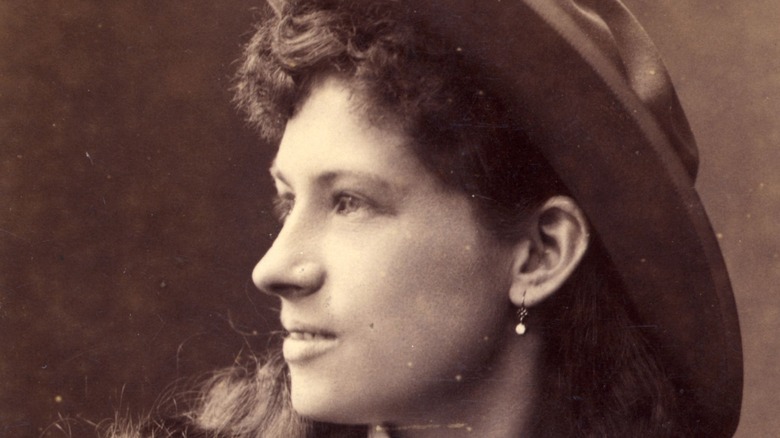
The Truth About The Time Annie Oakley Competed At Wimbledon
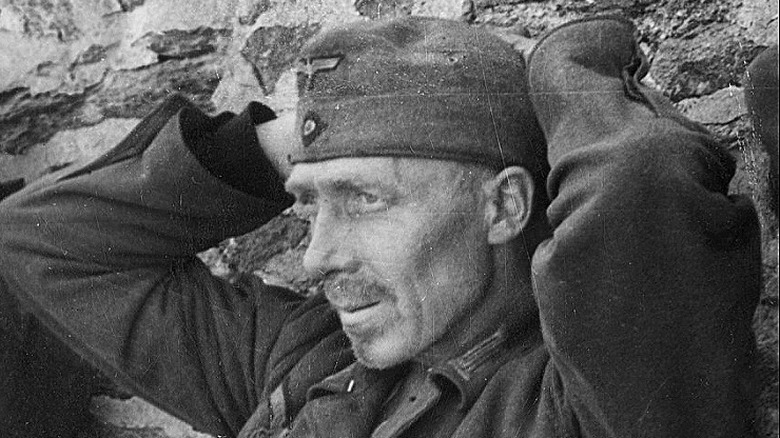
The Untold Truth Of America's WWII German POW Camps

The Amish's Complicated Relationship With Electricity Explained

The Messed Up Truth Of Venezuelan President Nicolas Maduro
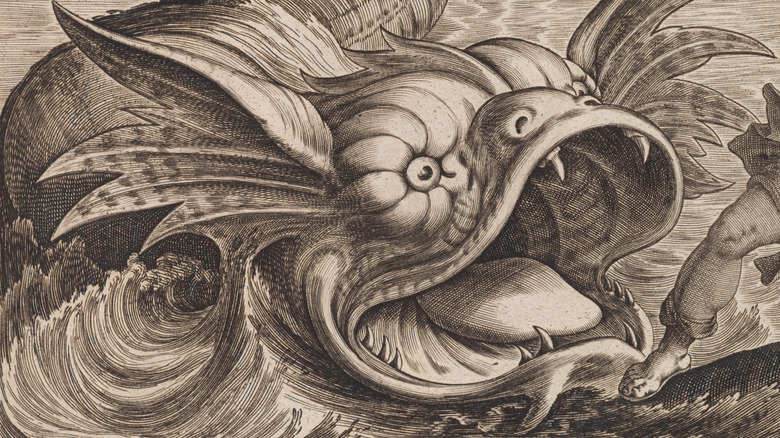
The Most Believable Tales About Mythical Sea Creatures

What The World's First Atomic Bomb Looked Like
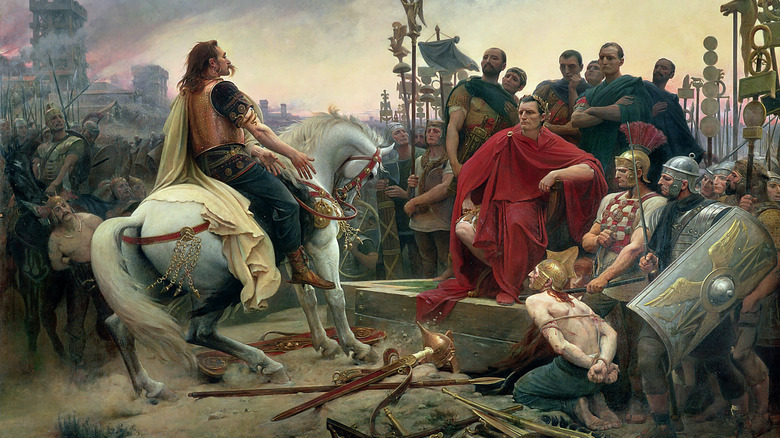
Here's What It Was Like For Prisoners In Ancient Rome
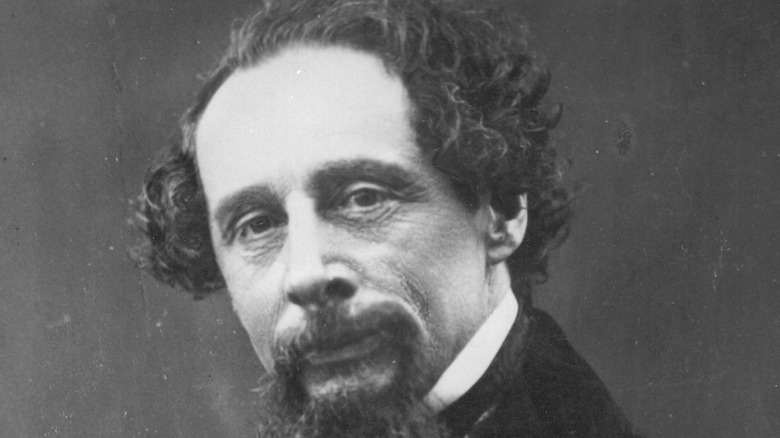
What You Didn't Know About Charles Dickens' Affair
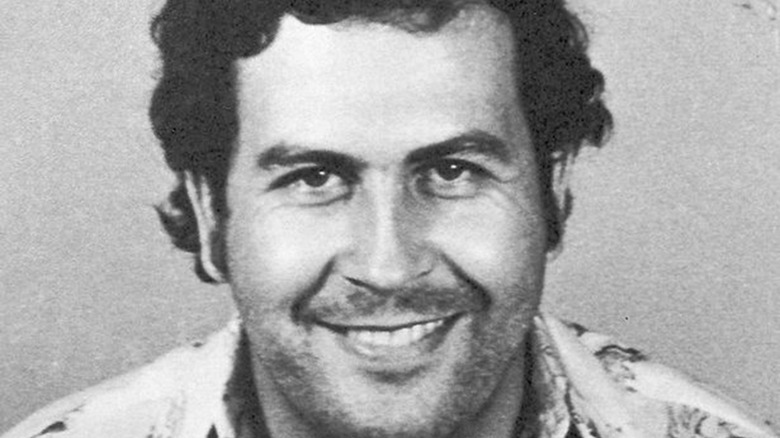
A Look At Pablo Escobar's Luxury Prison
